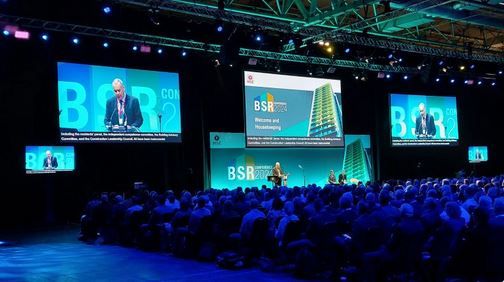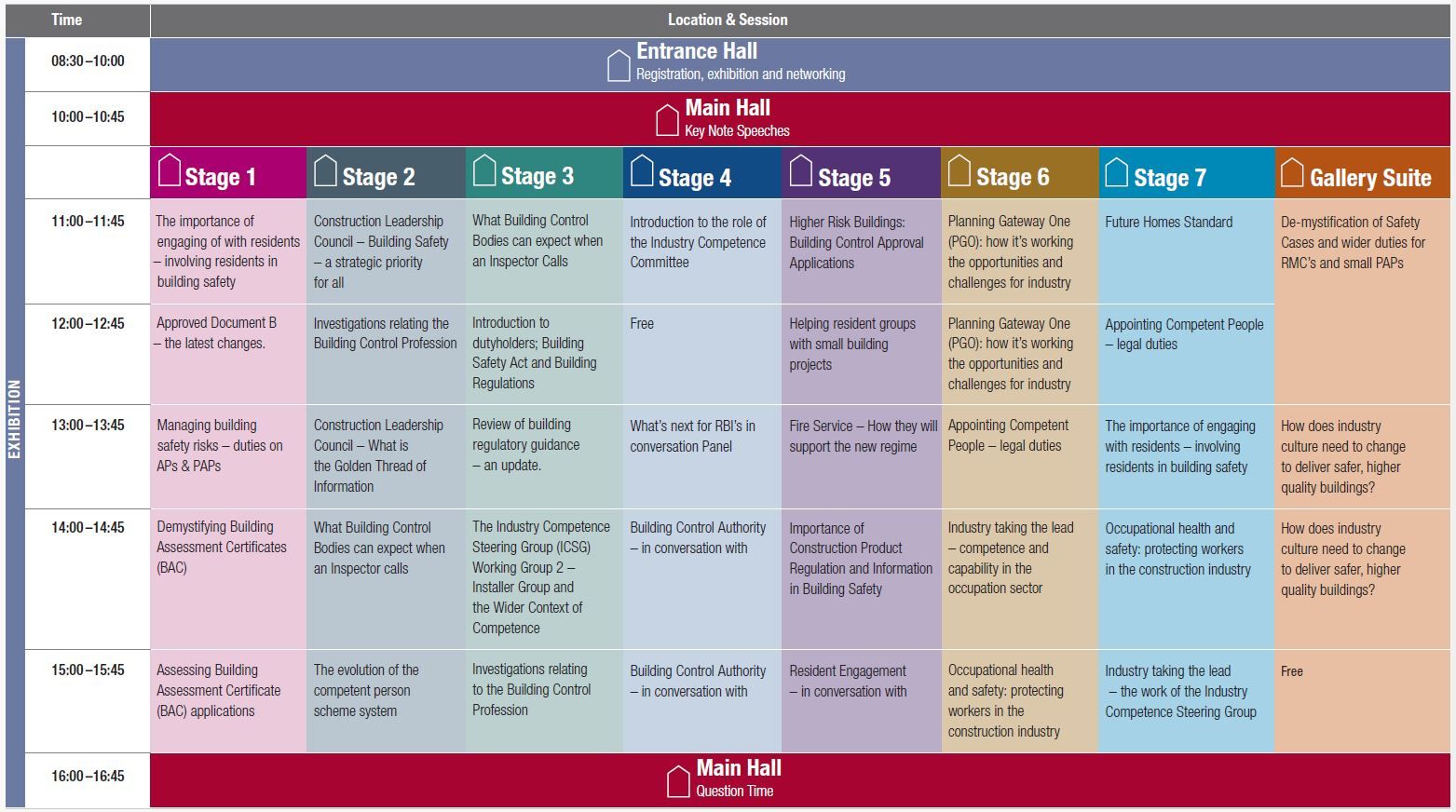- Sign In
- Home
- About
- ICM Training
- ICM Membership
- REGISTERS
- Construction Operative Matrix of Competence
- PAS 8671:2022 ─ Principal Designer
- PAS 8671:2022 ─ PRINCIPAL DESIGNER ─ ICM CRITERIA
- PAS 8671:2022 ─ PD ─ APPLICATION
- PAS 8672:2022 ─ Principal Contractor
- PAS 8672:2022 ─ PRINCIPAL CONTRACTOR ─ ICM CRITERIA
- PAS 8672:2022 ─ PC ─ APPLICATION
- Fire Door Inspector Register - BS8674:2025
- CDM Competence Registry™®
- Organisational Competency: BSA & CDM
- MEMBERS BRIEFINGS
- Newsletters and Blogs
- The ICM Forums
- Contact
- Sign In
CDM, BSA, B.Regs ─ Dutyholder and Competence Regulations
The Building Regulations etc. (Amendment) (England) Regulations 2023 insert a new Part 2A into the Building Regulations 2010. This contains detailed requirements on clients to appoint designers and contractors who are competent and new duties for the clients, designers and contractors which came into force on 1 October 2023.
Applies to all building work ─ these new regulations came into force on 1 October 2023 and apply to all regulated building work
Part 2A introduces a series of 17 new regulations, referenced 11A – 11Q
These new regulations provide the law covering the duties, competence and behaviour of all clients, designers and contractors
Part 2A also creates the new roles and duties of the Principal Designer and Principal Contractor for every project. These legal duties were first called for over five years ago in Dame Judith Hackitt’s landmark review of Building Regulations and Fire Safety.
The is some confusion in the industry on the various dutyholder roles each having the same functional duty names of Principal Designer and Principal Contractor. Although these same functional names exist in three distinctly separate regulatory instruments, government and parliament spent considerable consultation time creating the new laws with new duties attached to the respective rolls.
The original concept of the statutory dutyholder was created under the Construction Design and Management [CDM] Regulations which are the UK's enactment of EU Directive 92/57/EEC [Mobile Construction Sites Directive]. Although the Directive has remained unchanged, there have been three iterations of CDM over time; the statutory dutyholders were originally called the Planning Supervisor and Principal Contractor; each controlling construction health and safety in their respective pre-construction phase and construction stage of a project.
At each CDM iteration the original Planning Supervisor name changed; in 2007 it became the CDM Coordinator [CDM-C]; and lastly in 2015 became the Principal Designer. The Principal Contractor name has remained constant.
Readers should be in no doubt that the requirements of Part 2A of the Building Regulations places new duties and responsibilities on all involved in regulated building work of any kind as does the Building safety Act.
To avoid confusion, The Institute of Construction Management will promote the differentiated distinctly separate statutory functional names starting to appear in the industry as follows:
─ for the Principal Designer:
- PDcdm - Construction (Design and Management) regulations
- PDbsa - Building Safety Act
- PDbregs - Building Regulations
─ for the Principal Contractor:
- PCcdm - Construction (Design and Management) regulations
- PCbsa - Building Safety Act
- PCbregs - Building Regulations
The same person or organisation may be appointed to undertake more than one functional statutory dutyholder role provided they are appropriately competent to perform without conflict nor compromise and are appropriately commissioned in writing by the client clearly stating under which statutory instrument the appointment(s) are made.
Professionals MUST avoid confusing the commissioning employer with false claims of competence and use best behaviour to inform the employer when the appointed dutyholder is unable to remain appointed and instruct the employer to appoint another.
█ Warning to ALL Construction & Property Professionals: ─ Please ensure you are able to prove your competence to undertake commissioned work ─ please be aware it is a now criminal offence to accept and undertake work if you are incompetent! ─ it is your absolute legal statutory duty not to accept any commission for which you lack the appropriate skills, knowledge and experience ─ you MUST demonstrate good behaviour and be prepared to say 'No' and reject work beyond your competent abilities to perform
The Building Regulations etc. (Amendment) (England) Regulations 2023
Competence: Principal Designer : 11G
(1) A Principal Designer MUST have—
(a) where the person is an individual, the skills, knowledge, experience and behaviours necessary,
(b) where the person is not an individual, the organisational capability,
to fulfill the duties of a Principal Designer under these Regulations in relation to the design work included in the project.
(2) Where the Principal Designer [PD] is not an individual, PD must designate an individual who has the task of managing its functions as the Principal Designer.
(3) Before making the designation under paragraph (2), PD must take all reasonable steps to satisfy themself that the individual to be designated has the skills, knowledge, experience and behaviours necessary to manage the function of principal designer on behalf of PD in such a way as to ensure PD fulfills the duties of the Principal Designer under these Regulations in relation to the design work included in the project.
Competence: Principal Contractor : 11H
(1) A Principal Contractor MUST have—
(a) where the person is an individual, the skills, knowledge, experience and behaviours necessary,
(b) where the person is not an individual, the organisational capability,
to fulfill the duties of a Principal Contractor under these Regulations in relation to the building work included in the project.
Commercial Clients:
The new duties under the Building Safety Act and the Building Regulations that clients must make are the same as under the CDM Regulations and are “suitable arrangements for planning, managing and monitoring a project (including allocation of sufficient time and other resources) so as to ensure compliance with all relevant requirements.” These arrangements must ensure that if the design is built it will be compliant with all relevant requirements and ensure that the work is actually carried out in accordance with those requirements. The arrangements must also enable designers and contractors to cooperate with each other and to check regularly whether any of the work is classed as higher risk building work, as defined in section 91ZA of the Building Act 1984. This duty has been inserted into that Act by section 32 of the Building Safety Act 2022.
The duty to make suitable arrangements is for the whole life of the project. There is also a duty on clients to “provide building information as soon as is practicable to every designer and contractor on the project.” This is for the duration of the project. Commissioning clients have a legal duty to cooperate with any other person working on the project with duties under these regulations to enable them to fulfill their duties. The major emphasis must be on planning, monitoring and managing work. The client plays a key pivotal participating role in the building and has explicit duties to work with the supply chain to design and deliver a compliant and safe building.
Domestic Clients:
Domestic clients are treated differently ─ this is because a domestic home is not generally a workplace or place of work. However, a word of caution when, perhaps, a domestic client may be using part of the home for some work activity such as (say) a dentist, hairdresser, or other commercial activity. Special consideration will need to be made as to the status of the client and appropriate competent measures put in place to manage the project.
If it is established the client is, after all reasonable consideration, categorised as a domestic client they will have no responsibility other than to appoint competent persons. Where there is only one contractor, they are responsible for making all the arrangements to manage the project safely. Where there is more than one contractor then either the Principal Contractor or the Principal Designer, subject to written agreement with the client, is responsible for making those arrangements for the project. But they must be made or a criminal offence is created.
Clients are not alone in having their roles regulated. The regulations make new provisions for two new roles, Principal Designer and Principal Contractor. As noted previously, whilst these are the same titles as under CDM, as recommended by Dame Judith, they have quite specific additional responsibilities.
General Duties:
The regulation of the Principal Designer and Contractor begins by setting out the appointments that the client needs to make and these appointments must be in writing to evidence the date of appointment and who is appointed. Where there is a single Contractor then they are de-facto the Principal Contractor. Where there is more than one Contractor, or reasonably foreseeable that there will be more than one Contractor on a project, then the client must appoint a Principal Designer and Principal Contractor.
The Designer must have “control over the design work as the Principal Designer” and the Contractor must have “control over the building work as the Principal Contractor” ─ and, these appointments must be made in writing: they must be explicit, evidenced and auditable!
A client may instead certify, in writing, that the person(s) appointed as principal designer and contractor under CDM are also appointed under the Building Regulations. These appointments must be made before any application for approval for Higher Risk Building [HRB] work and before construction starts on any other form of project; they are for ALL building work, not just HRBs.
For higher risk building work clients will need to keep written records of the steps they took to assure themselves that those appointed are competent to undertake the work involved.
New regulation (11E) sets out in some detail the considerations that must be addressed before appointing a designer or contractor. They apply to ALL building projects and all those appointed, requiring them to be competent. Chapter 3 of Part 2A of the amendment regulations addresses the competence requirements in some detail.
There are four new regulations, 11F-I, for competence: a general regulation, one each for Principal Designer and Principal Contractor, and one giving requirements should either Principal cease to meet the competence requirements.
Chapter 4 of Part 2A sets out the general duties of all duty holders as well as the additional legal duties of Principal Designers and Principal Contractors. These include sharing information and communicating effectively with other parties on the project.
In Chapter 5 at the end of the Part is a regulation that defines as a “necessary behaviour” of anyone claiming to be competent a willingness to refuse to carry out work which is not compliant with any relevant requirement, or to undertake design work that effectively cannot be built in compliance with regulations. Co-operation is now also a necessary behaviour, along with saying no to doing things beyond their skills, knowledge or experience.
For anyone making appointments since 1 October 2023, all these requirements now apply. This means that Part 2A of the Building (Amendments etc) (England) Regulations 2023 is mandatory reading for anyone responsible for making appointments or bidding for work under the new regime. They have to be appropriately understood in detail. Lacking understanding, or worse, ignorance, will not be a reasonable defence. Indeed, it might be clear evidence of guilt and of incompetence.
These are significant duties. While some organisations are well prepared and have been doing sufficient to comply, others may need to take rapid action as these new regulations came into force on 1 October 2023. Anyone unfamiliar with them may already be committing offences.
All responsible clients, Principal Designers, Principal Contractors and Accountable Persons should now be looking to meet the new obligations in a safe, reasonable and proportionate manner.



BSR 2024 Conference ─ 21st May 2024 ─ NEC:
The HSE hosted the conference at the NEC ─ the ICM attended in person ─ this awaited event was popular and oversubscribed
ICM's V.President David Jones was pleased to meet briefly with Jon Vanstone ─ HSE has appointed Jon Vanstone chair of Certass, as chair of the Industry Competence Committee (ICC), a statutory committee operating under the Building Safety Regulator, overseen by the Health and Safety Executive.
With a commitment to advancing competence standards in the built environment, Jon has assumed this role after leading the interim committee (IICC) for the past two years.
With an unwavering focus on competence enhancement in light of the Grenfell Tragedy, the ICC operates as a critical advisory committee within the HSE, focusing on promoting and enhancing safety measures from design through to products, installation and management of all aspects of a building.
Jon’s appointment as ICC Chair underscores his dedication to fostering a culture of competence within the built environment. Jon’s extensive experience and expertise is said to have made him an ideal candidate to guide the ICC’s efforts in its mission to bolster the competence of organisations and individuals, ensuring people can live and work in buildings that are safe.
Jon commented, “I hope to see the work of the ICC usher in an era of transformative change at all levels of industry so that people across the country can be safe and feel safe in the buildings they live and work in.”
The ICC’s statutory standing within the HSE positions it as a foundation of the regulatory framework, underlining its role as a guiding force in competency practices and protocols within the built environment. With Jon at the helm, the ICC is poised to continue its impactful journey started during the tenure of the interim committee, fostering a culture of safety, collaboration, and excellence across all sectors.
The ICM hopes to continue in dialogue with Jon as the industry transitions culturally 2024++
Keynote address
- Sarah Newton, Chair, Health and Safety Executive
- Lee Rowley MP, Minister of State for Housing, Planning and Building Safety, Department for Levelling Up, Housing and Communities
- Philip White, HSE’s Chief Inspector of Buildings and Director of Building Safety Division
Elective sessions
- The sessions were recorded and, when available will be reported on fully for the industry
Question time
Opportunity to ask senior industry leaders and regulators questions.
- Sarah Newton, Chair, Health and Safety Executive
- Philip White, HSE’s Chief Inspector of Buildings and Director of Building Safety Division
- Mark Reynolds, Construction Leadership Council Co-Chair and Group Chairman and Chief Executive, Mace
- Chyrel Brown, Chief Operating Officer, One Housing
- Duncan Johnson, Deputy Director, Construction Products Regulation, Office for Product Safety and Standards (OPSS)
- Catherine Adams, Director of Building Systems and Net Zero, DLUHC
Conference programme ─ Details of Elective Sessions

.Conflict of Interests Policy Statement.
. Website Design Kent by CARISS
